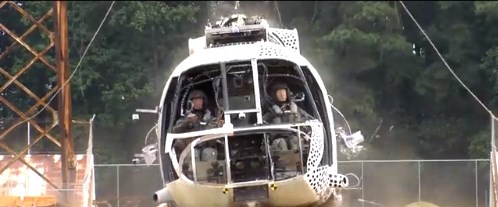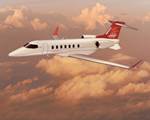VIDEO: Helicopter Drop Test
NASA evaluates composites’ ability to improve helicopter crashworthiness by dropping a helicopter fuselage to simulate a severe survivable crash according to military and commercial transport requirements.

August 28, 2013 drop test of a former Marine helicopter at the Landing and Impact Research (LandIR) facility at NASA's Langley Research Center (LaRC) in Hampton, Va. SOURCE: NASA.
This video shows a 45-ft/13.7m long CH-46E Sea Knight helicopter fuselage being released from a 30-ft/9m height and hitting the ground at roughly 30 mph/48 kmh. This first test, completed August 2013, will provide a baseline for a second test in summer 2014, which will assess the crash performance of an airframe with composite retrofits as well as other new technologies.
NASA, the U.S. Army, U.S. Navy and the FAA have worked for more than two years to develop the Transport Rotorcraft Airframe Crash Testbed (TRACT) as part of NASA’s Rotary Wing Project (RWP), with the ultimate goal to help helicopters and other vertical take-off and landing (VTOL) aircraft carry more passengers and cargo more quickly, quietly, safely and with less environmental impact. Another key objective is to develop better computer models for designing composite and hybrid composite-metal structures, as well as predicting crashworthiness.
quotes RWP project manager Susan Gorton: “As composites become more widely used as primary structure in helicopters and advanced rotary wing vehicles, it becomes apparent that there is much that is still unknown about their characteristics in a crash environment, and the ability to design for specific crashworthiness criteria with composite structures is still an active research area.” According to a NASA spokeswoman quoted by , several different composite subfloor designs will be tested to see if they reduce the deceleration felt by the helicopter occupants. “We could then apply it to not only new designs but also as a retrofit to existing configurations.”
Related Content
-
ORNL demonstrates lightning strike protection tech for composites
Researchers, led by Vipin Kumar, developed a low-cost, recyclable carbon fiber wind turbine blade tip that showed resilience to high-voltage lightning strikes, with more innovations in store.
-
AIMM Center for advanced composites NDT opens in Ogden, Utah
Attendees from SpaceX, Northrop Grumman, Hill AFB, 47G and others joined CICNDT and Omni NDE to demonstrate the latest in robotic CT, RT, shearography, thermography, laser UT and metrology.
-
Proving thermoplastic composites match carbon fiber/epoxy performance in road bikes
CDCQ, LxSim, Addcomp and Argon 18 collaborate to optimize a carbon fiber/PA6 bike seat post, democratizing AFP and demonstrating materials and process for future designs and production.



